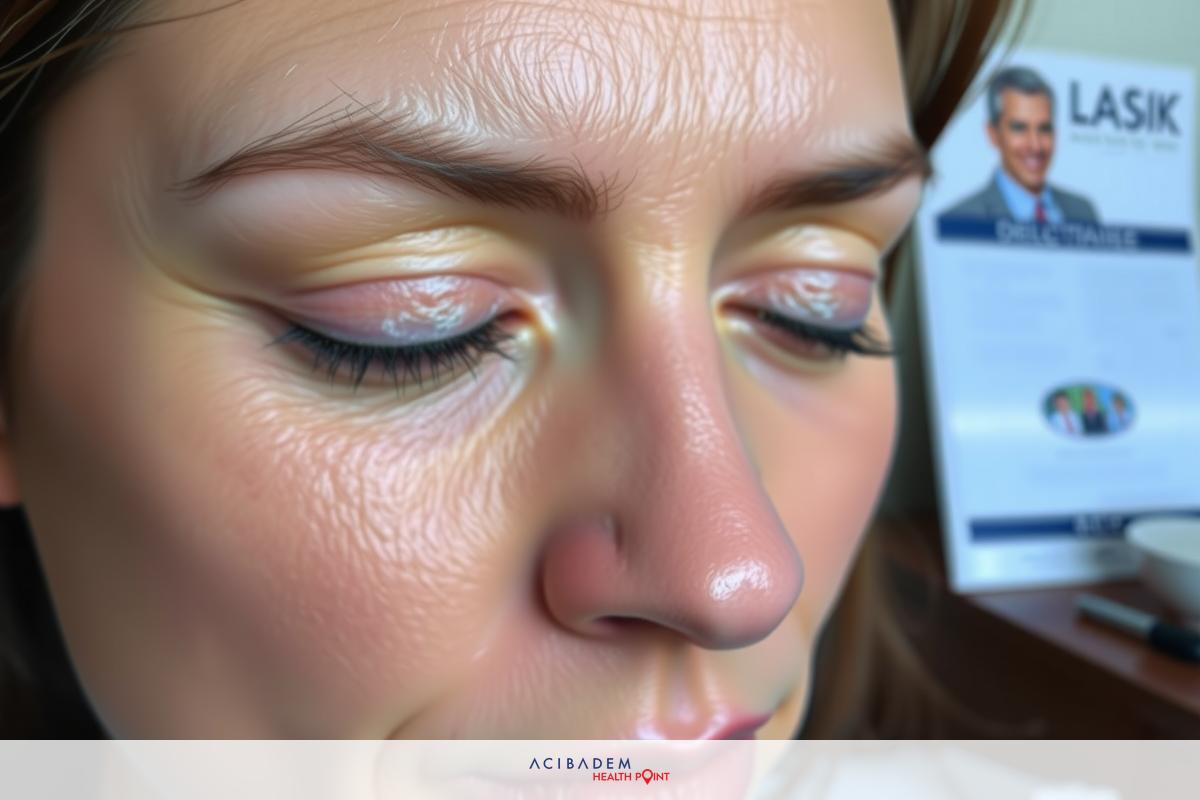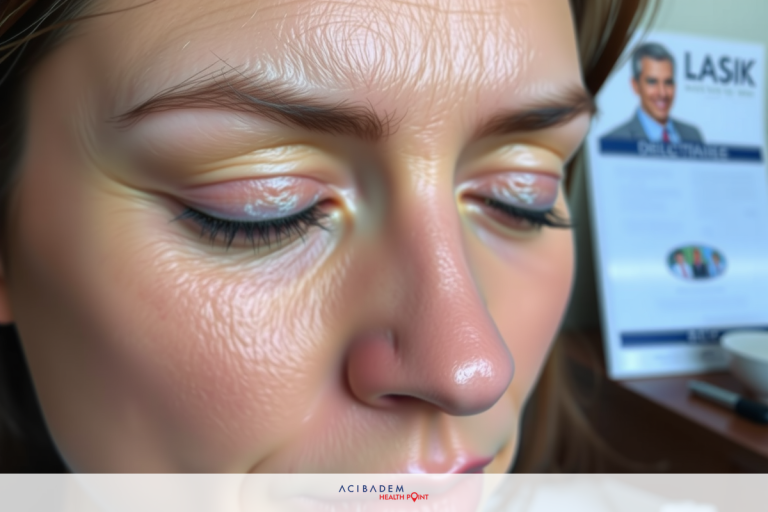How Long Dry Eye Typically Last After LASIK Dry eye, a frequent side effect following LASIK surgery, intrigues many potential patients due to its varying duration. This condition results from temporary changes in the corneal nerves controlling tear production. It’s not uncommon for this discomfort to spark concern among those contemplating LASIK.
The uncertainty surrounding the length of dry eye symptoms post-surgery is valid, with factors influencing it being numerous and diverse. From individual healing rates to pre-existing ocular conditions, understanding these elements helps set realistic expectations about recovery. While managing dry-eye is part-and-parcel of the healing process, relief methods are aplenty – reassuring news indeed!
Causes of Dry Eye After LASIK
Dry eye after LASIK surgery is a phenomenon that arises from varied factors and causes. One primary cause is the temporary disruption to the corneal nerves during the procedure, leading to reduced tear production and hence dry eyes. Additionally, the laser used in LASIK surgery can potentially cause inflammation on the ocular surface, which further contributes to dry eye symptoms. It’s also worth noting that these side effects are generally temporary and part of our body’s natural response to healing.
Looking at broader influences, we find individual patient conditions playing significant roles too. For instance, patients with pre-existing dry eye condition or other ocular disorders may experience more pronounced or prolonged symptoms post-surgery. Age also bears weight in this discussion; older people naturally produce fewer tears increasing their susceptibility to post-LASIK dry eye syndrome. Furthermore, environmental factors such as arid climates or frequent exposure to screens can exacerbate these symptoms.
In summary, while undergoing a transformative procedure like LASIK brings about an exciting prospect for improved vision clarity without dependence on corrective eyewear, it’s important not to overlook potential short-term discomforts like dry eyes. Understanding what leads up to such occurrences aids us in managing them effectively during recovery: be it through medications prescribed by your ophthalmologist or simple lifestyle adjustments.
Duration of Dry Eye Symptoms
The duration of dry eye symptoms after LASIK surgery hinges on a complex interplay of factors, creating an experience that is unique to each individual. Some patients may find relief within weeks, while others might grapple with the discomfort for several months post-surgery. A key determinant lies in how one’s body responds to and recovers from the procedure.
Factors impacting recovery time can be both intrinsic and extrinsic. Internally, aspects such as age, overall health status, pre-existing ocular conditions like blepharitis or meibomian gland dysfunction could extend the duration of dry eyes. Externally, lifestyle choices and environmental conditions play their part too – heavy screen usage or living in arid climates may prolong recovery times due to increased tear evaporation rates.
While it’s essential to note these varied factors influencing symptom duration, let’s also remember that most cases resolve within six months post-surgery; rare are instances where they persist beyond this timeframe. Nevertheless, maintaining open communication with your ophthalmologist throughout your healing journey enables early identification if symptoms seem unusually prolonged or severe – paving way for prompt intervention and effective management strategies.
Managing Dry Eye After LASIK
How Long Dry Eye Typically Last After LASIK Navigating through the recovery period post-LASIK surgery, while exciting, can sometimes be a bit challenging due to temporary discomforts like dry eyes. However, with an array of effective management strategies and treatments available today, this journey becomes far less daunting and much more comfortable.

To begin with, here are some simple yet impactful measures that can significantly alleviate symptoms:
- Hydration: Ensuring you’re adequately hydrated aids overall health including maintaining moisture in your eyes.
- Blink Exercises: Regular blink exercises help stimulate tear production.
- Limit Screen Time: Reducing screen time reduces eye strain and slows down tear evaporation rate.
- Eyewear Protection: Wearing sunglasses outdoors provides protection against wind and sun -elements that could exacerbate dryness.
Turning towards medical interventions:
- Artificial Tears: These over-the-counter eye drops provide instant relief by lubricating the ocular surface.
- Prescription Medication: In severe cases or when artificial tears don’t suffice, ophthalmologists may prescribe medication to increase tear production or reduce inflammation.
- Punctal Plugs: Temporary plugs inserted into tear ducts prevent drainage of natural tears or artificial ones applied – retaining moisture for longer durations on the ocular surface.
By adopting these various coping mechanisms alongside regular follow-ups with your ophthalmologist one can effectively manage dry-eye symptoms during their recovery from LASIK surgery – creating a smoother path towards clearer vision! How Long Dry Eye Typically Last After LASIK
Frequently Asked Questions
What makes dry eye after LASIK a common occurrence?
During the LASIK procedure, nerves in the cornea that stimulate tear production are temporarily disrupted. This leads to reduced tear generation and results in what we identify as dry eyes. It's part of our body's response to healing.
How long can I expect my post-LASIK dry eye symptoms to last?
The duration varies among individuals based on several factors, including age, overall health status, pre-existing ocular conditions, and lifestyle habits. Most patients find their symptoms resolving within six months post-surgery.
Can I do anything at home to ease my dry eye discomfort after LASIK surgery?
Absolutely! Simple measures like staying well-hydrated, performing blink exercises regularly and reducing screen time can make a noticeable difference. Wearing sunglasses outdoors also helps protect against environmental factors that may exacerbate your symptoms
Are there any medical treatments available for managing severe dry eye post-LASIK?
Yes! If over-the-counter artificial tears don't provide sufficient relief or if your condition is more severe – prescription medication might be used to increase tear production or reduce inflammation; punctal plugs could also be considered for retaining moisture on the ocular surface longer.








